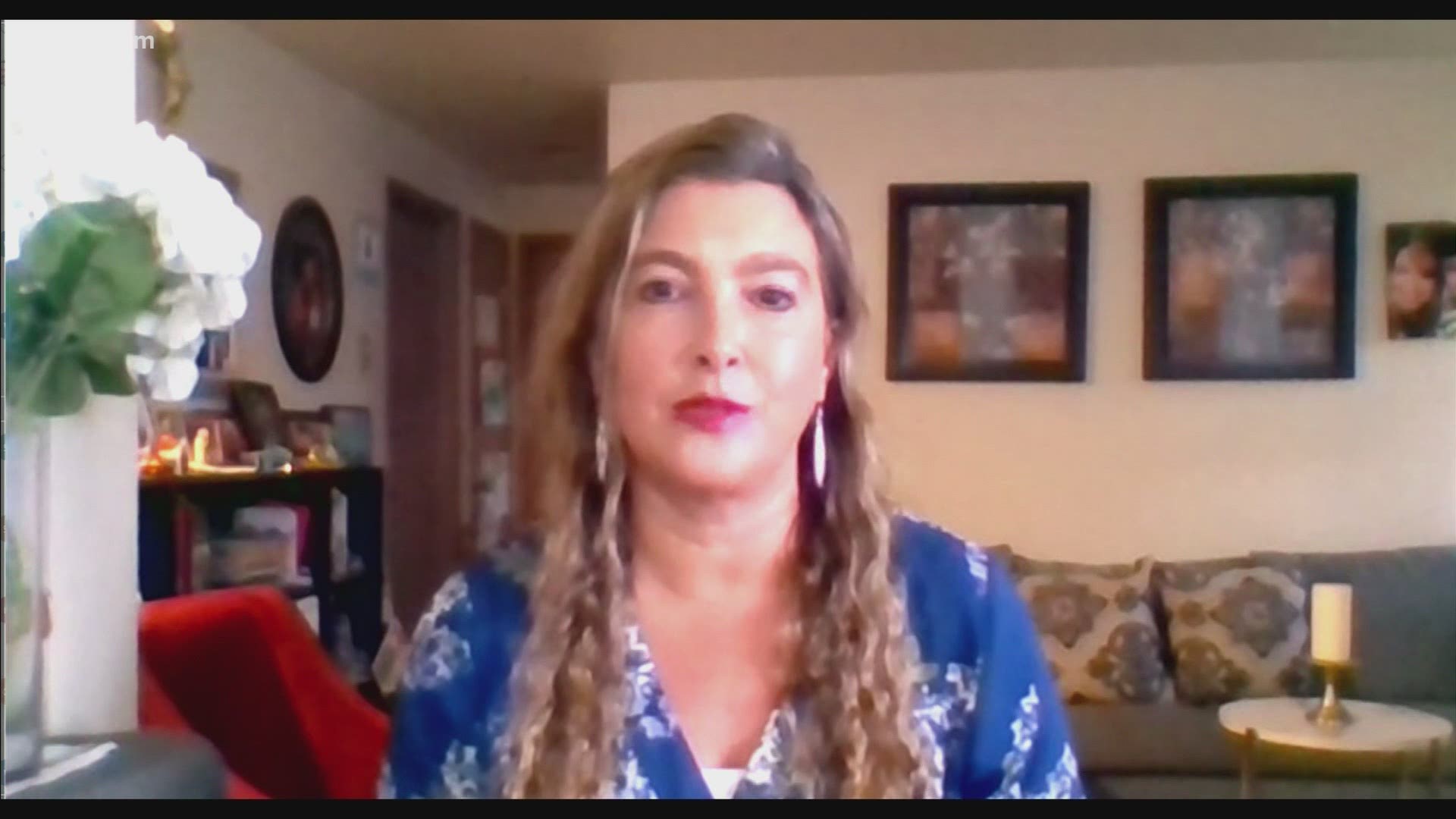SEATTLE — The homeless population could grow when the eviction moratorium ends in March. With the economic uncertainty mental health needs are compounded for many of us, especially for those of us who were vulnerable to begin with.
Ravenna Candy is a licensed mental health counselor, and the director of supported housing programs at Navos. She said homelessness is a community health issue that affects us all. She talked with KING 5’s Michelle Li about some of the solutions mental health care organizations are providing to people experiences homelessness in western Washington.
Viewing homelessness as a public health issue
Homelessness is a public health issue because it affects all of us. The homeless population relies on resources funded by taxpayers. In many cases repeat visits to the ER, hospitalizations, and incarceration are more costly and less lasting than helping people through recovery.
Candy leads an assertive community treatment program at Navos. It’s a comprehensive care approach that aims to help people dealing with mental illness or substance abuse problems.
“The assertive community treatment approach is comprehensive,” said Candy “We use a wrap-around model. We come to the participant two times per day. Our team delivers medicine, nursing services, mental health therapy, nutrition and food twice a day, where they are. And, we provide housing if they need it.”
A solution to homelessness that often works
On average a participant is in the assertive community treatment program for three years. Each year about 15% of the program’s participants graduate. Graduation means that the participant is likely back in touch with family, is in an educational program or has a job, and is able to sustain housing.
Through assertive community treatment, participants often gain access to social services, connect to educational resources and job training, and do volunteer work. Many wish to return and serve others as peer counselors or therapists.
Beyond the positive outcomes for individuals who participate in assertive community treatment, the public at large also benefits.
Assertive community treatment results
The assertive community treatment programs that Navos runs with its partners, Greater Lakes Mental Health Care and MultiCare Behavioral Health, serve 250 people each year, thanks to a recent expansion. The assertive community treatment programs help the community by:
- 70% reduction in ER visits which can be costly and repetitive.
- Reduction in incarceration and recidivism rates among participants, which saves taxpayers as much as $40,000 per year per participant.
- Reconnecting people who would otherwise be homeless, hospitalized or incarcerated with family, friends, and jobs.
Why aren’t more of the homeless involved in assertive community treatment?
There is demand for more participants in assertive community treatment. The State of Washington, its counties, public health agencies, and the University of Washington School of Medicine partner with behavioral health care organizations throughout the state to deliver assertive community treatment care.
There are some elements of the program that are not covered by state funds, including food and housing. For these critical care elements, organizations like Navos rely on partnerships with food banks and support from the community to provide stable housing for participants.
In addition, Candy said the state is exploring a program expansion. After 12 years of helping people though recovery, she said she is hopeful more lives will be touched through assertive community treatment.

